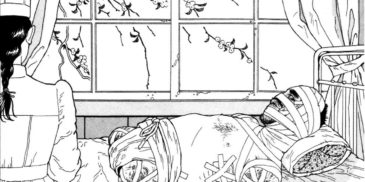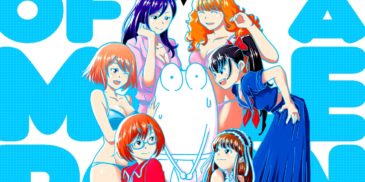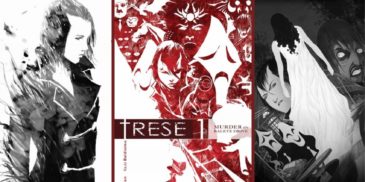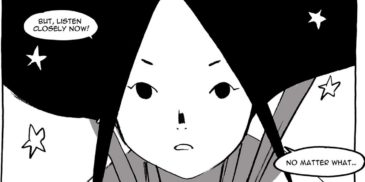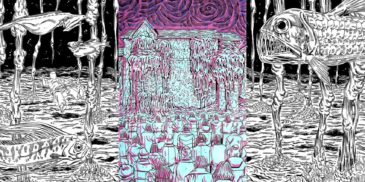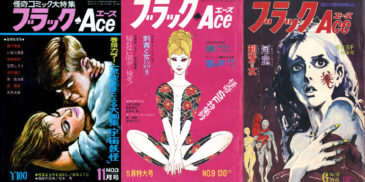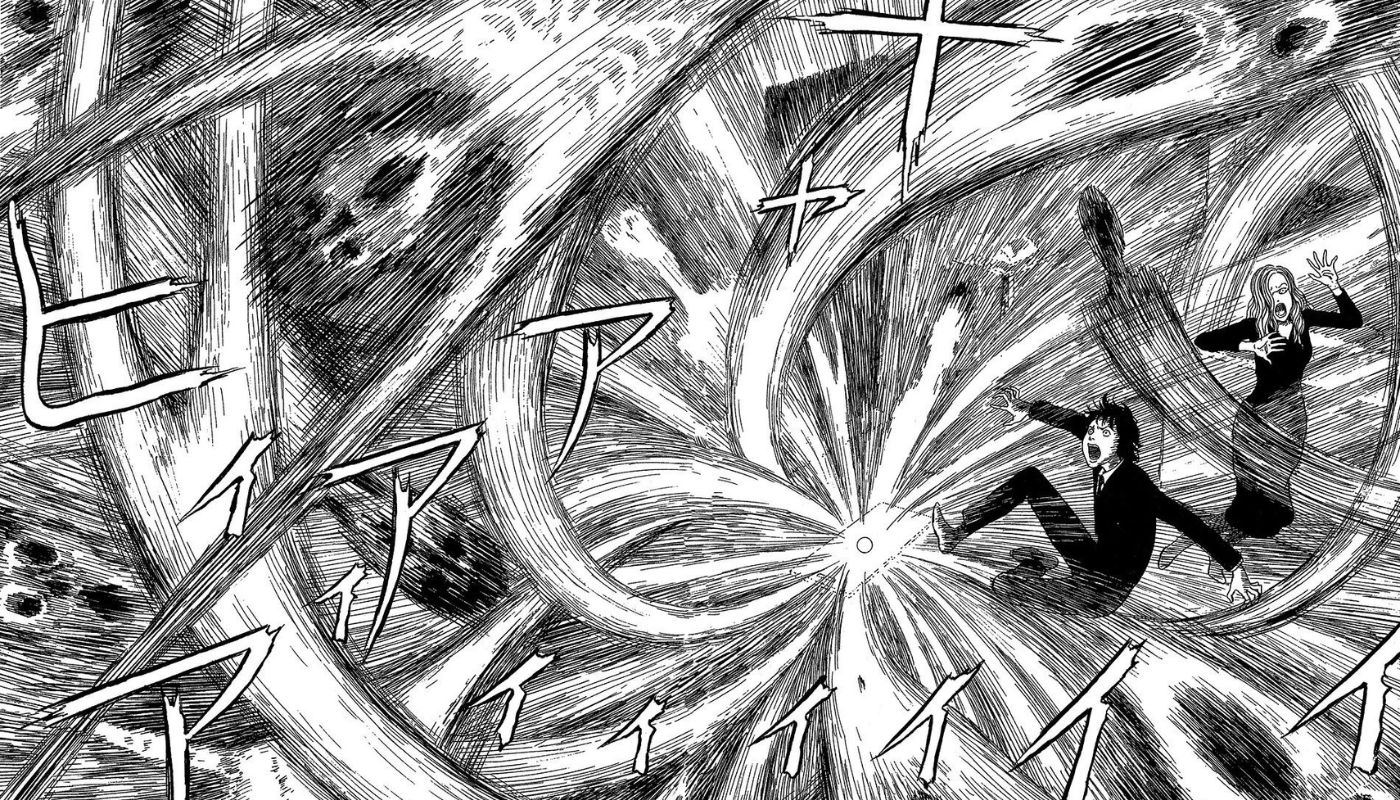
“Four people intent on killing themselves meet through the suicide website Black Paradox: Maruso, a nurse who despairs about the future; Taburo, a man who is tortured by his doppelganger; Pii-tan, an engineer with his own robot clone; and Baracchi, a woman who agonizes about the birthmark on her face. They wander together in search of the perfect death, fatefully opening a door that leads them to a rather bizarre destiny…”
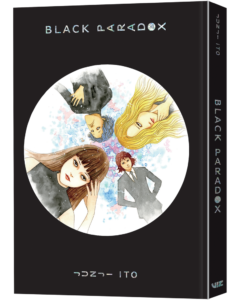
It just would not be October without some good horror manga, even better when coming from one of the masters of the genre, Junji Ito. However, Black Paradox is not a new release from the acclaimed master of cosmic horror, but rather the inevitable translation of a 2009 title—It is at this point we can assume everything Ito has created will eventually get a proper English release. In fact, Black Paradox is a book that many fans may already be familiar with given how long it has remained unpublished in the West compared to other works which have seen multiple editions. Is there a reason for the delay? Well, depending on who you ask the answer will vary.
Junji Ito has made a deserved name for himself in horror, given his ability to tap into primordial fears on par with masters of both metaphysical and cosmic terror. His ability to instill horror in the reader via unimaginable horrors tied to protagonists who only exist to bear witness has put his name alongside H.P. Lovecraft in discussing the mangaka’s effectiveness in tapping into the fear of the unknown. However, Ito’s horror is not always steeped in uncertainty and the creator will approach his work with comedic wit, science-fiction, or character-driven narratives. Black Paradox happens to be a mixture of all three and, arguably, one of the weaker attempts in this approach.
Storywise, Black Paradox goes on a lot of tangents that don’t really serve the story well. Notably, the inclusion of a cyborg as a means to explore another realm comes across as a ham-fisted plot point. Additionally, the light humor elements coming at the expense of the gloomy robot evoke more pity than intended laughs. While Pii-tan and his cyborg double represent how poorly constructed the story is, this sentiment extends to all four of the characters in various ways that they manage to stay flat and uninspiring.
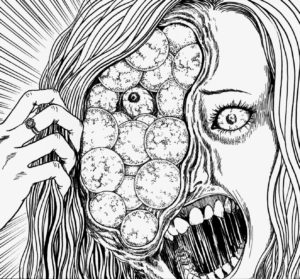
In indulging in a more sci-fi, character-driven narrative Black Paradox is devoid of the sense of dread that Ito so wonderfully conjures. Furthermore, elements of body horror are tame in comparison to other pseudo-science-driven narratives like Gyo. It is difficult to point to anything in Black Paradox that highlights the best of Ito’s capabilities as a creator, and this extends to the art as well. Certainly, the book still contains his detailed style and there are still perfectly ghastly panels of body/mind-bending horror, but the amount of stunning visuals is minor in comparison to other projects.
Black Paradox begs the question of whether everything Ito makes deserves a platform over other horror manga that have been, largely, neglected (Hideshi Hino, Suehiro Maruo, and Nishioka Kyoudai, to name but a few). While Black Paradox is easily his most uninspired and disjointed story to date, (with the least visual flair) the answer is still a resounding… Yes.
As the modern-day master of horror manga to the West, Ito is held to high standards that he can’t always reach. Black Paradox may be disappointing when looking at the mangaka’s oeuvre, but is still a solid horror story by any other standards with enough visual flair to still appease the existing fandom. Furthermore, readers’ preference as to whether they like the abstract or character-driven work of Ito will affect the overall impression of the manga and it is not implausible for certain readers to find deeper value within. Add the fact that Viz, once again, presents the work of Ito in such glorious editions that look great on the shelf, and Black Paradox is still a release worthy of picking up (or as a Halloween gift).
Black Paradox is Available Through Viz Media
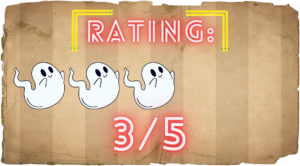
More Manga Reviews
The horrors of war don’t just end once a soldier returns; in fact, one of the saddest aspects of global conflict is society’s lack of post-care for soldiers. Unfortunately, heroism… Manga Diary of a Male Porn Star is an autobiographical account of Kaeruno Erefante’s time in the AV industry. The manga follows Kaeruno’s time from being a cock on screen… June 10th, 2021 marked the release of Trese on Netflix, an animated series based on a Filipino Komik of the same name. The anime has been having impressive traction on… Ken Niimura is a Spanish-Japanese artist who employs a simplified, endearing style to share three stories in this volume of the taboo. Taking inspiration from the Japanese tales he heard… Soil is a title I have been familiar with for some time, existing as a cult title that had yet to be published in English. Consequently, I had been tempted… After contributing to periodical manga magazines such as Manga OK from the mid-60s, the ever-ambitious Taro Bonten would decide to create his own bespoke gekiga magazine in 1969 named Black…The Caterpillar (2009) Manga Review – Suehiro Maruo Adapts Edogowa Rampo
Manga Diary Of A Male Porn Star (NSFW) Review – Learning the Ins and Outs of AV
TRESE Graphic Novel Review – A Success of Filipino Horror
Never Open It: The Taboo Trilogy Manga Review – Japanese Folklore Re-Envisioned
Soil Manga Review – Tainted Ground Invites Cosmic Horror
Black Ace – The Ground-Breaking Horror Manga Magazine
